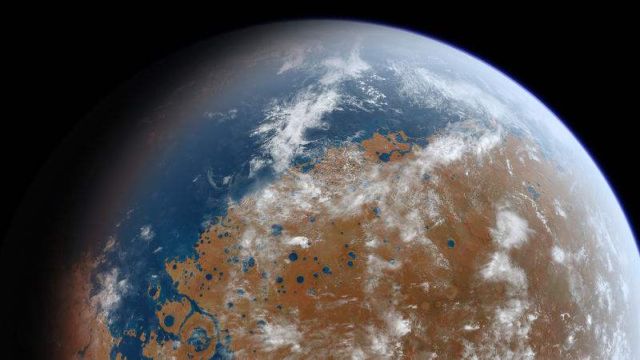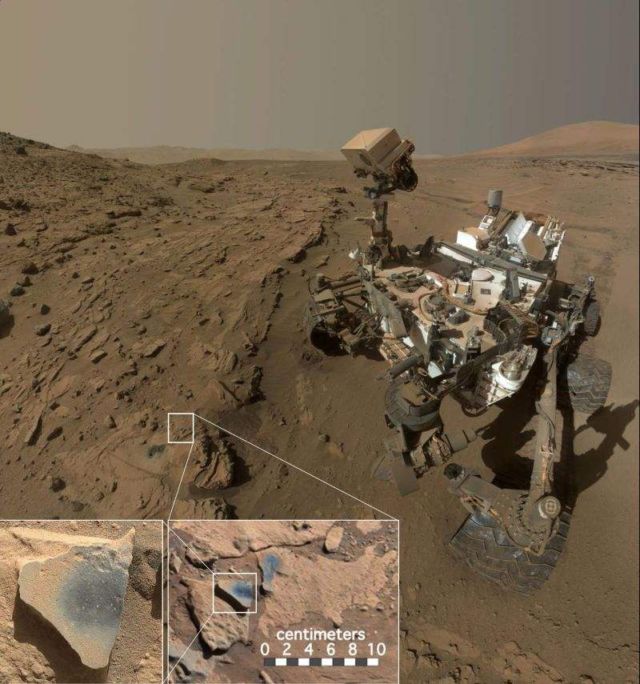Scientists found that the Red Planet, was more Earth-like than previously thought.
The Red Planet once had more oxygen
Chemicals found in Martian rocks by NASA’s Curiosity Mars rover suggest the Red Planet once had more oxygen in its atmosphere than it does now.
Above, what Mars looked like billions of years ago. Credit Ittiz
Researchers found high levels of manganese oxides by using a laser-firing instrument on the rover. This hint of more oxygen in Mars’ early atmosphere adds to other Curiosity findings, such as evidence about ancient lakes, revealing how Earth-like our neighboring planet once was.
This research also adds important context to other clues about atmospheric oxygen in Mars’ past. The manganese oxides were found in mineral veins within a geological setting the Curiosity mission has placed. From that context, the higher oxygen level can be linked to a time when groundwater was present in the rover’s Gale Crater study area.
This scene shows NASA’s Curiosity Mars rover at a location called “Windjana,” where the rover found rocks containing manganese-oxide minerals. Credit: NASA/JPL-Caltech/MSSS
Nina Lanza, a planetary scientist at Los Alamos National Laboratory in New Mexico, said:
“The only ways on Earth that we know how to make these manganese materials involve atmospheric oxygen or microbes. Now we’re seeing manganese oxides on Mars, and we’re wondering how the heck these could have formed?”
Microbes seem far-fetched at this point, but the other alternative — that the Martian atmosphere contained more oxygen in the past than it does now — seems possible, Lanza said. “These high manganese materials can’t form without lots of liquid water and strongly oxidizing conditions. Here on Earth, we had lots of water but no widespread deposits of manganese oxides until after the oxygen levels in our atmosphere rose.”
source jpl.nasa







Leave A Comment